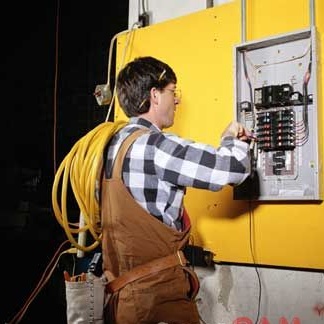
For minor repairs to electrical wiring, he will need rubber gloves, a screwdriver and pliers with insulated handles, a soldering iron and electrical tape. Before starting work, it is necessary to de-energize the network (turn off the plugs). A faulty appliance is simply unplugged.
A common cause of breakdown of the vacuum cleaner and electric shaver, the device of which is very similar in many respects, is the wear of graphite brushes and the salting of the collector of the motor armature. In a vacuum cleaner, the brushes are pressed by a spring and a special nut, in a razor - only by a spring. It is not difficult to press the brush to the collector or replace it, and the collector must be cleaned with thin sandpaper and gently clean the grooves.
In a hotplate, a spiral often burns where it is connected to wires. To strengthen the "weak spot", wind the spiral on a piece of wire with a diameter of 2 mm, bend it in the form of a loop and tighten with a nut. The spiral will crash into the wire, thereby increasing the area of the connection and its reliability.
If the current is interrupted from time to time in the iron or heater, it means that one of the wires in the cord has broken. After removing the plug from the outlet, slide your fingers along the cord to find a break, cut the sheath, strip the wire 20–25 mm long at both ends, twist them tightly together, and carefully wrap the joint with insulation tape. If the wire consists of several thin wires, twist them and solder them with a thin layer of lead.
Switches and sockets in which a porcelain or plastic part is cracked should not be glued or wrapped with wire or electrical tape, they must be replaced. To do this, turning off the current in the network, use a screwdriver to remove the external screws that secure the wires. Strip the ends of the wires to a length of approximately 20 mm. Using a screwdriver, make a ring that is rolled in the direction of screwing the screw, and, having done these operations in the reverse order, put the socket in place.
